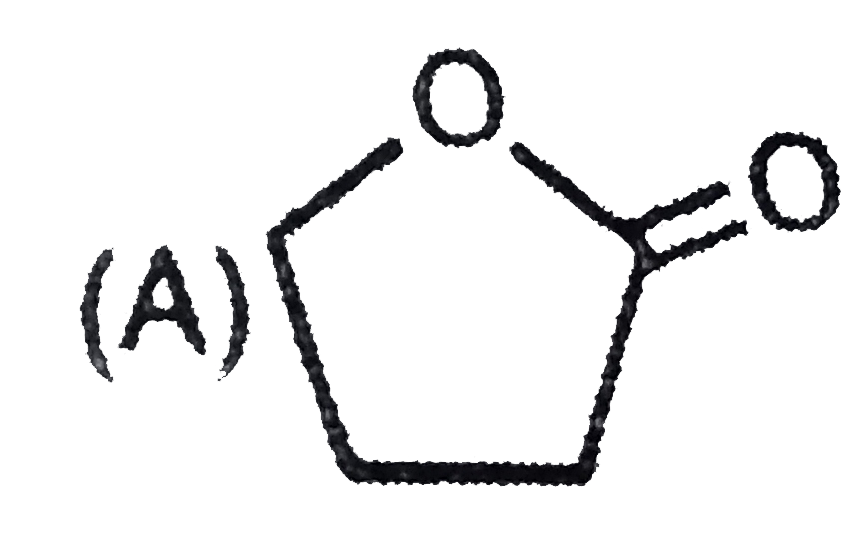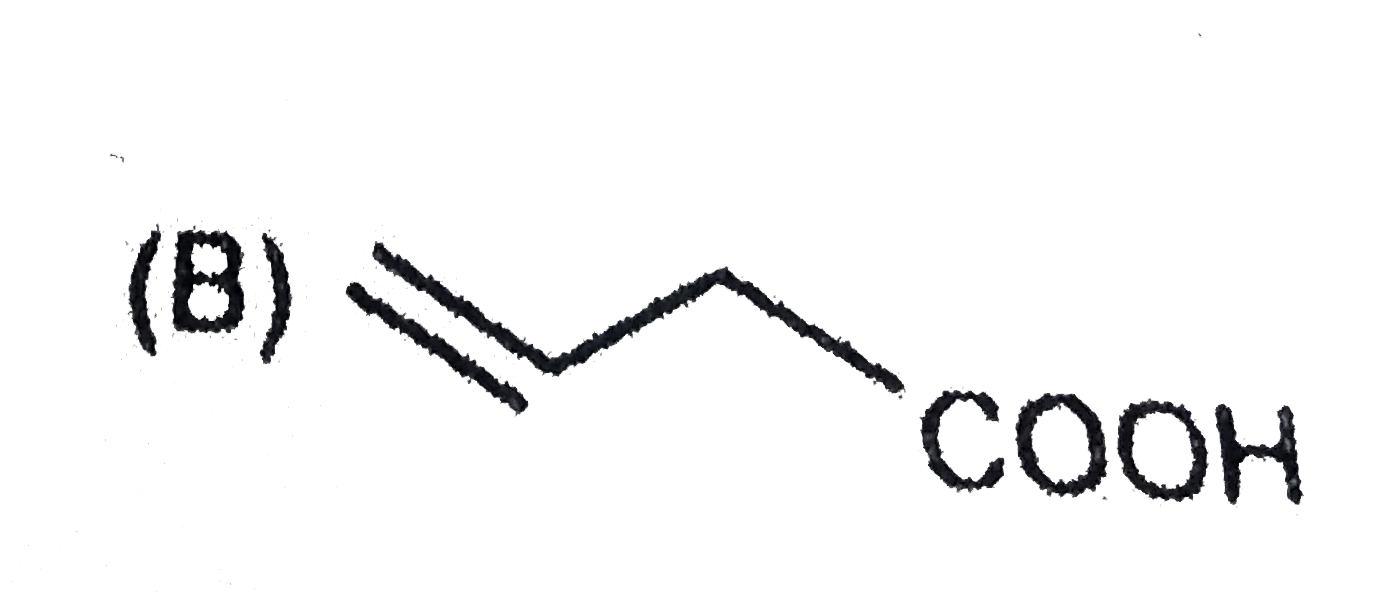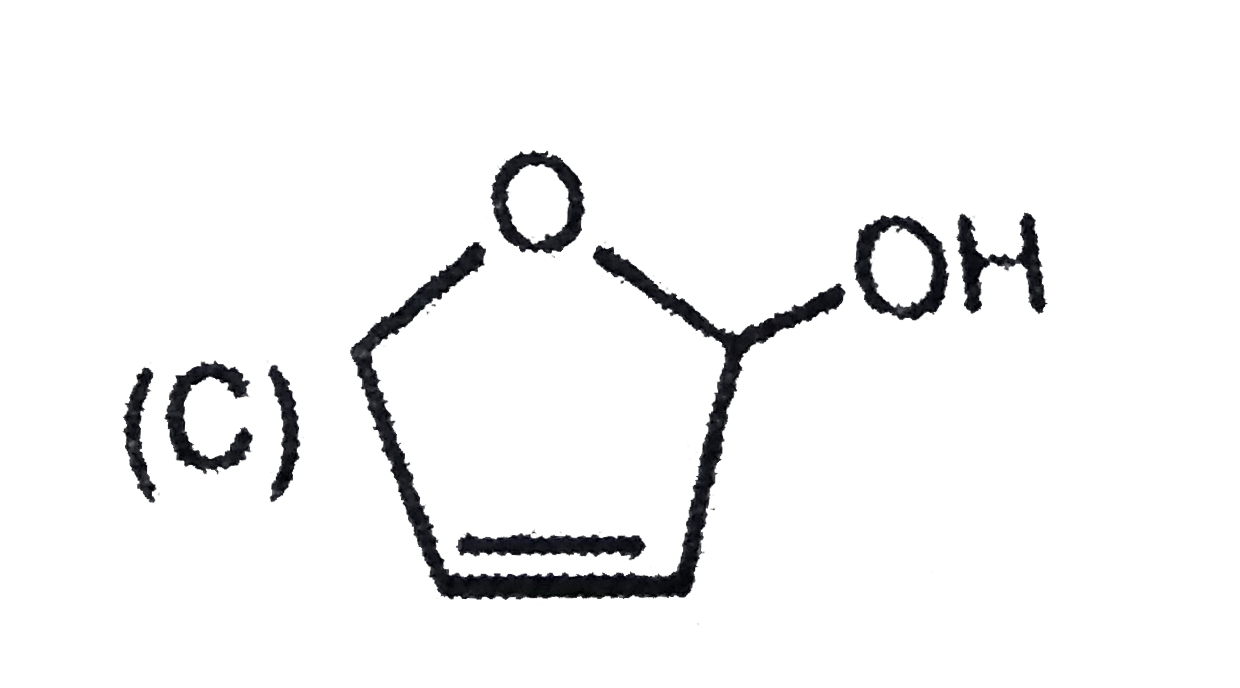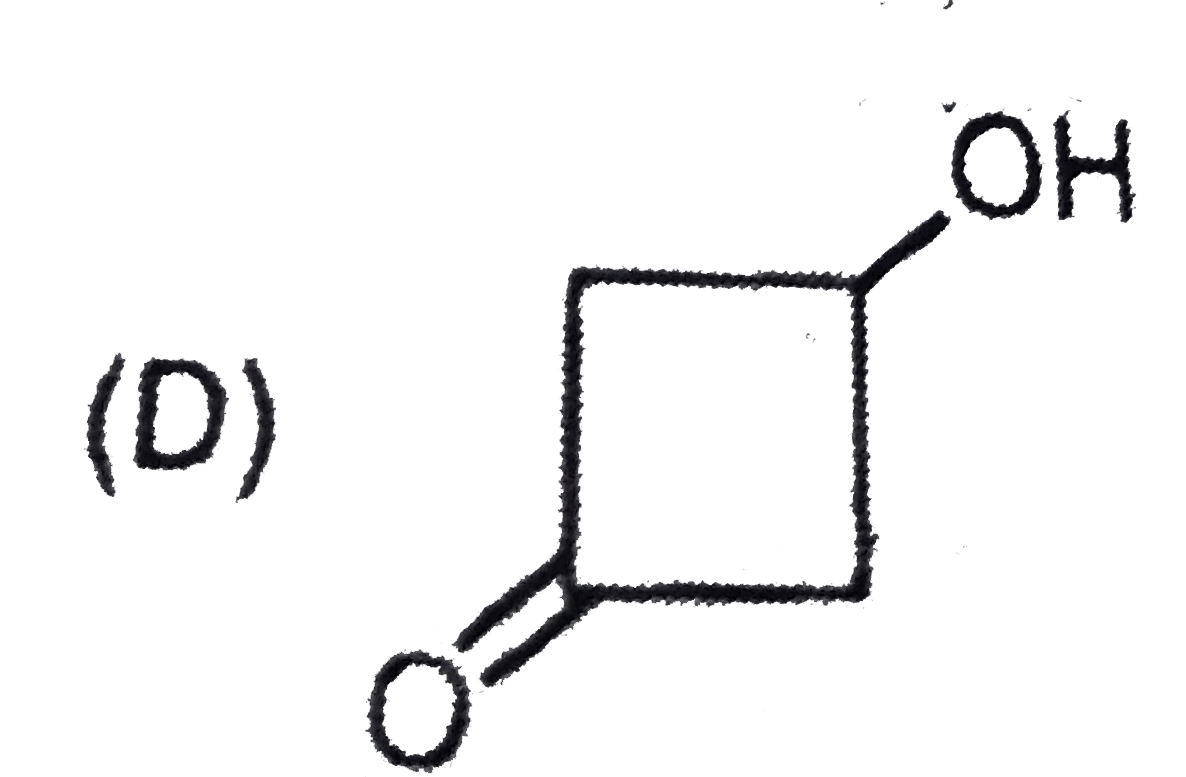4-Oxobutanoic acid is reduced with Na-borohydride and the product is treated with aqueous acid. The final product is :




The correct Answer is:A
To solve the problem step by step, we will analyze the reduction of 4-oxobutanoic acid with sodium borohydride (NaBH4) and the subsequent treatment with aqueous acid.
Step 1: Understand the structure of 4-Oxobutanoic Acid
4-Oxobutanoic acid has the following structure:
- It is a four-carbon chain (butanoic acid) with a ketone group (C=O) at the 4th carbon.
- The structure can be represented as:
HOOC−CH2−CH2−C(=O)−H
where the carbonyl group (C=O) is at the 4th position.
Step 2: Reduction with Sodium Borohydride (NaBH4)
When 4-oxobutanoic acid is treated with sodium borohydride, the ketone group (C=O) is reduced to an alcohol (C-OH). The reaction can be summarized as follows:
- The ketone group is reduced to an alcohol, resulting in the formation of 4-hydroxybutanoic acid:
HOOC−CH2−CH2−CH(OH)−H
Step 3: Treatment with Aqueous Acid
After the reduction, the product (4-hydroxybutanoic acid) is treated with aqueous acid. In this step:
- The hydroxyl group (OH) can be protonated due to the acidic environment, making it a better leaving group.
- The protonation leads to the formation of water (H2O) and the carbon atom that was attached to the hydroxyl group can form a double bond with the adjacent carbon atom.
Step 4: Final Product Formation
The final product after the treatment with aqueous acid will be:
- The compound will lose the water molecule, resulting in the formation of a double bond between the second and third carbon atoms:
HOOC−CH=CH−COH
- The final product is 4-hydroxybut-2-enoic acid.
Conclusion
The final product after the reduction of 4-oxobutanoic acid with NaBH4 and subsequent treatment with aqueous acid is 4-hydroxybut-2-enoic acid.
Final Answer
The final product is 4-hydroxybut-2-enoic acid.
---
4-Oxobutanoic acid has the following structure:
- It is a four-carbon chain (butanoic acid) with a ketone group (C=O) at the 4th carbon.
- The structure can be represented as:
HOOC−CH2−CH2−C(=O)−H
where the carbonyl group (C=O) is at the 4th position.
When 4-oxobutanoic acid is treated with sodium borohydride, the ketone group (C=O) is reduced to an alcohol (C-OH). The reaction can be summarized as follows:
- The ketone group is reduced to an alcohol, resulting in the formation of 4-hydroxybutanoic acid:
HOOC−CH2−CH2−CH(OH)−H
After the reduction, the product (4-hydroxybutanoic acid) is treated with aqueous acid. In this step:
- The hydroxyl group (OH) can be protonated due to the acidic environment, making it a better leaving group.
- The protonation leads to the formation of water (H2O) and the carbon atom that was attached to the hydroxyl group can form a double bond with the adjacent carbon atom.
The final product after the treatment with aqueous acid will be:
- The compound will lose the water molecule, resulting in the formation of a double bond between the second and third carbon atoms:
HOOC−CH=CH−COH
- The final product is 4-hydroxybut-2-enoic acid.
The final product after the reduction of 4-oxobutanoic acid with NaBH4 and subsequent treatment with aqueous acid is 4-hydroxybut-2-enoic acid.
The final product is 4-hydroxybut-2-enoic acid.
Topper's Solved these Questions
- REDUCTION, OXIDATION & HYDROLYSIS REACTIONSBOOK - RESONANCE ENGLISHCHAPTER - REDUCTION, OXIDATION & HYDROLYSIS REACTIONSEXERCISE - Part-III : High Level Problems (Subjective Questions)
6 Videos
- REDUCTION, OXIDATION & HYDROLYSIS REACTIONSBOOK - RESONANCE ENGLISHCHAPTER - REDUCTION, OXIDATION & HYDROLYSIS REACTIONSEXERCISE - Only One Option Correct Type
4 Videos
- REDUCTION, OXIDATION & HYDROLYSIS REACTIONSBOOK - RESONANCE ENGLISHCHAPTER - REDUCTION, OXIDATION & HYDROLYSIS REACTIONSEXERCISE - Additional problems for self Practice (Part-1)
30 Videos
- PERIODIC TABLE & PERIODICITYBOOK - RESONANCE ENGLISHCHAPTER - PERIODIC TABLE & PERIODICITYEXERCISE - ORGANIC CHEMISTRY(BASIC CONCEPTS)
27 Videos
- S BLOCK ELEMENTSBOOK - RESONANCE ENGLISHCHAPTER - S BLOCK ELEMENTSEXERCISE - ORGANIC CHEMISTRY(Biomolecules & Polymer)
4 Videos
Similar Questions
o-Chloroaniline is treated with a mixture of NaNO2 and HCl and the product is reacted with cuprous bromide. The final product in the reaction will be
View SolutionPropene is allowed to react with B2D6 and the product is treated with acetic acid. The final product obtained is -
View SolutionWhen glycol is heated with dicarboxylic acid, the products are:
View SolutionIf phthalic acid is treated with NH3 and then it is first heated weakly then strongly, the final product formed is
View SolutionPyruvic acid is a product of
View SolutionMagnesium is burnt in the atmosphere of dinitrogen. The ash so produced is treated with water. The final products are
View SolutionAniline is reacted with bromine water and the resulting product is treated with an aqueous solution of sodium nitrite in presence of dilute hydrochloric acid. The compound so formed is converted into. The compound so formed is converted into a tetrafluoroborate which is subsequently heated. The final product is
View SolutionAcetylene is treated with excess sodium in liquid ammonia. The product is reacted with excess of methyl iodide. The final product is……………….
View SolutionIf acetylene is reacted with an excess of sodium metal in hexane
and the reaction product is treated with 1-bromopropane ,
the final product will be
View SolutionPyruvic acid is the end product of
View Solution
